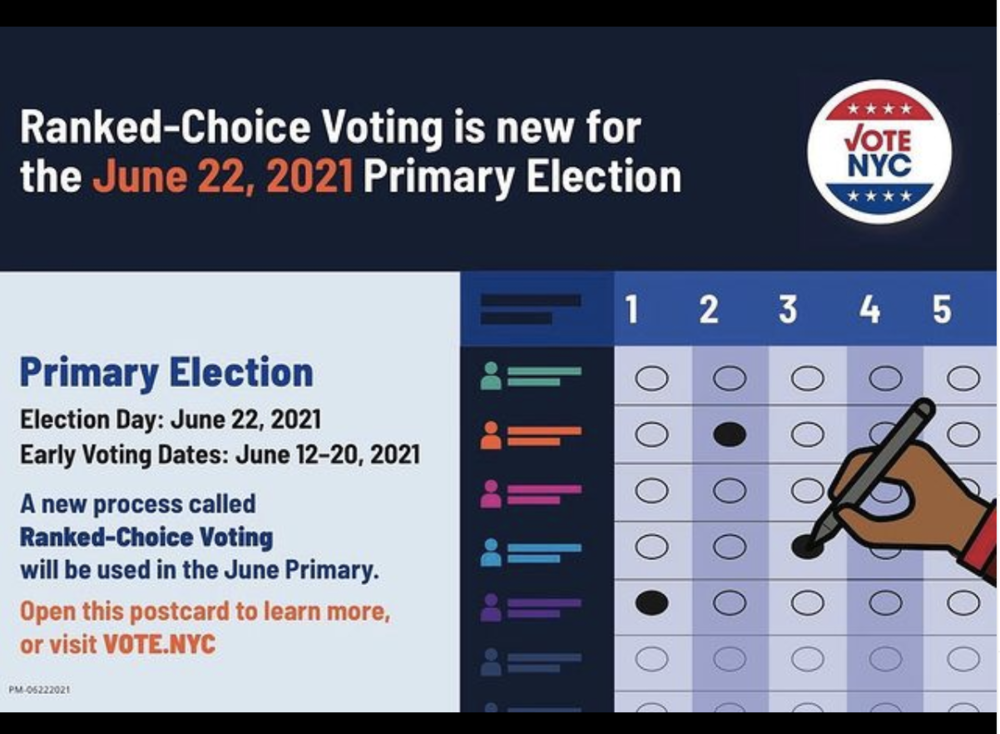The primary election in New York City is less than a month away, and this year marks the first time that New York City will be utilizing ranked choice voting.
What is Ranked Choice Voting?
The concept behind ranked choice voting is relatively simple. On primary day, voters can rank up to five candidates in order of preference rather than casting a vote for just one. You can mark your first choice first, your second choice second, and so on and so forth.
Voters can rank as many candidates as they would like, meaning that you can still only vote for one candidate if you prefer (so long as you rank that candidate first).
How does it work?
Ranked choice voting ballots will be counted in a series of rounds. In the first round, only first-choice votes will be counted. If any candidate receives a simple majority of first choice votes (over 50 percent) they immediately win the election.
If no candidate receives a majority, counting will proceed to a second round. The candidate who came in last place during the first round will be eliminated. Anyone who ranked the eliminated candidate first on their ballot will now have their second choice counted. A new tally is conducted that counts first and second choice votes.
This process will continue until a candidate passes the 50 percent mark, thus securing a majority of the vote.
How to mark your ballot?
Like previous elections, this month’s primary will use paper ballots that are then read electronically.
On your paper ballot, fill in the oval next to the name of your favorite candidate under the first column. If you have a second choice candidate, fill in the oval next to their name under the second column. You may rank up to five candidates using the five columns provided.
Note that individuals with disabilities or impaired vision will still be able to AutoMark Ballot Marking devices to cast their votes. Ballots cast on AutoMark devices will also allow for ranked choice voting. The device will prompt users to select their first choice candidate, then their second choice candidate, and so on.
Important Tips
• Do not select the same candidate for multiple choices. If you do, only your first choice vote will be counted.
• Do not select multiple candidates for the same ranking.
• Fill in all ovals completely to make sure they are properly recorded.
Why the change?
In 2019, New York City voters approved ranked choice voting.
First, the new system ensures that candidates must secure 50 percnt of the vote to win. This is designed to prevent instances where a candidate with a minority of the electorate wins the election. For example, Bill de Blasio secured his first Democratic nomination in 2013 with only 40 percent of the vote.
Second, the new system encourages voters to think more about why they should vote for candidates rather than why they shouldn’t vote for them.
Advocates believe ranked choice voting will inspire a similar focus on positivity among candidates that will lead to a decrease in attack ads.
Lastly, ranked choice voting is designed to produce more representation in government. The Bay Area cities that have already implemented the system have seen an increase in candidates of color and women elected to office.



